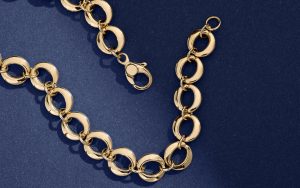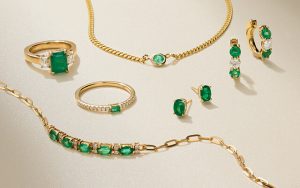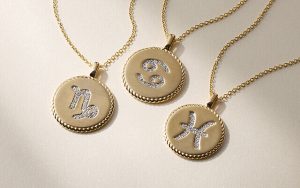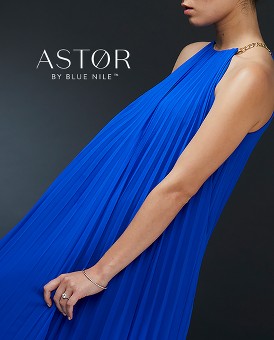The Histories of Popular Diamond Shapes
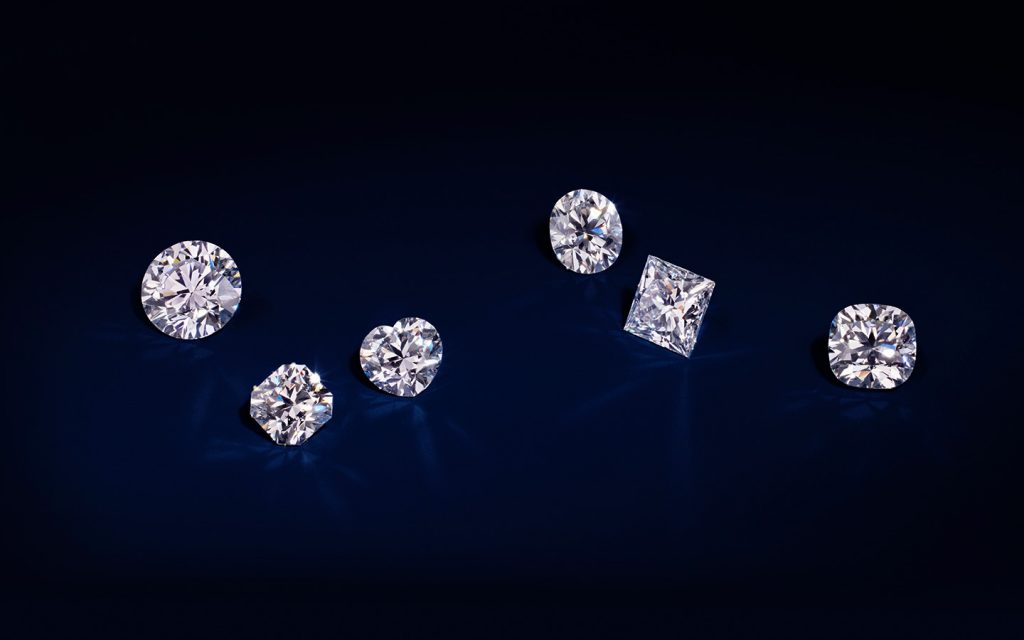
In This Blog
Diamonds have been cherished gems for centuries, bringing enchanting brilliance to jewelry worldwide. Starting out as rough gems, diamonds are finished into jewelry-quality baubles through cutting and polishing processes that highlight their best qualities. Through these techniques, diamonds take many different shapes.
The shape of a diamond helps to highlight its unique appearance. It can also match a specific style or setting, with each of the unique diamond shapes bringing their own benefits. Both natural and lab grown diamonds are cut by experts into specific shapes to showcase their beauty.
As technologies have improved, diamond shapes have become more precise. Today’s most popular diamond shapes are designed to help each gem look its absolute best, highlighting the stunning qualities that give diamonds their brilliance. Each shape is cut expertly, using precise tools to hone the parts of a diamond that make this gem a timeless choice.
Shape vs Cut
The shape of a diamond is its general silhouette, typically viewed from the table-side–up perspective. It is not one of the 4Cs of diamonds, but rather an option to consider for both style and budget. Diamond cut refers to how well-proportioned a diamond is, while shape refers to its silhouette.
Sometimes diamond shapes are also referred to as their cut. You may see options for buying a round cut diamond, an oval cut diamond or other shapes. These terms refer to the shape. Diamond cut, on the other hand, is something that will be assessed as a part of an individual stone’s diamond grading report, which rates the technical cutting and faceting as a cut grade ranging from poor to ideal. All diamonds have both shapes and cuts.
Important Terms About Diamonds
The flat surfaces that are located throughout a gem in a geometric pattern.
The largest facet of a gemstone, typically located at the top of the gem.
The top portion of a diamond between the girdle and the table.
The middle point between the crown and pavilion of a diamond, it’s typically the diamond’s widest point.
The bottom section of a diamond stretching from the girdle to the culet.
The facet at the tip or bottom of a diamond, often smaller than the other facets.
Diamond faceting technique in which the facets are elongated, often in parallel lines giving a hall of mirrors effect.
Diamond faceting technique in which the facets are smaller and arranged to increase a gem’s sparkle.
Popular Diamond Shapes and Their Histories
When most people think of diamonds, they think of the now classic round brilliant cut. Considered the quintessential diamond, a round brilliant sparkles beautifully. But it’s not the only shape highlighting the unique allure of diamonds. There are other shapes, typically referred to as fancy shapes, that diamonds can also come in.
The most popular diamond shapes are round, princess, cushion, oval, emerald, pear, Asscher, heart, radiant and marquise. These different diamond shapes all have their own histories, with some more recently developed and others stretching back for centuries.
Round Diamond History
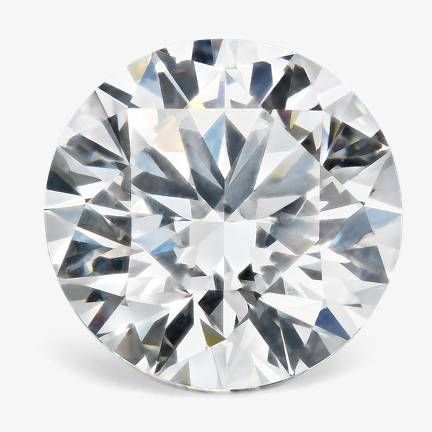
The iconic round brilliant diamond, also known as the modern round diamond, is the most popular of all the diamond shapes. It is identified by its round top, the widest point of its girdle in the middle and a small culet at the bottom of the stone. Round brilliant diamonds have 57 facets.
The round brilliant as we know it today is credited to Marcel Tolkowsky’s 1919 development of the ideal proportions for brilliant-cut diamonds. He formulated the proper faceting, cutting and measurements that help maximize the light performance of round brilliants. Since the 1919 advent of standardized round brilliant diamond proportions, this diamond shape has been used as the touchstone for grading and assessment of diamonds.
Though round brilliant diamonds as we know them were only introduced in 1919, this overall shape has a history dating back even further. Precursors to the round brilliant include rose cut, old mine cuts and old European cut diamonds as well. These earlier versions of round diamonds were cut mainly by hand, resulting in fewer facets and lower light performance. As the round cut grew with technology and Tolkowsky’s 1919 formula, the round shape gained facets and brilliance.
Modern round diamonds are all faceted for optimal beauty, taking lead from the ubiquitous formula dating back to the early 1900s.
Princess Diamond History

The princess cut diamond shape is identified by its signature square table. Also called the square cut, this diamond shape dates back to the 1960s. It is often described as an upside down pyramid, featuring a flat table and a wider pavilion than some other shapes. It is a unique diamond type, combining brilliant faceting and a step-cut pavilion for dynamic scintillation. It has anywhere from 50 to 58 facets, depending on how the stone was cut.
The first version of the modern princess cut diamond is credited to Arpad Nagy. He aimed to create a sparkling diamond cut to rival the round brilliant, calling his square-shaped creation the profile cut. Over the years, the more modern princess cut gained initial popularity in 1979 and soared as one of the most popular diamonds in the 80s and 90s.
Though the modern rectangular or square princess cut diamond shape is a recent development, the shape echoes a more vintage style. Many people consider today’s princess cut to be a newer version of the more historic French cut diamond shape.
Cushion Diamond History

Combining features of rounder and squarer shapes, cushion cut diamonds are identified by their boxy shape with rounded corners. They typically have a flat face, a thick girdle and tapering size down to the culet. On average, a cushion cut diamond has anywhere from 58-64 facets.
This diamond shape brings vintage style, making it no surprise that cushion cut diamonds date back to the 1700s. They are considered a modern version of the old mine cut. The vintage old mine cut shape had a larger culet and fewer facets than today’s cushion shape. As technologies and techniques improved, the old mine cut morphed into rounder or cushion shaped diamonds. For the evolution of the cushion shape, this resulted in adding more facets and reducing the size of the old mine cut’s culet.
The cushion shaped diamond’s predecessor, the old mine cut, got its name from changes to locations of natural diamond deposits. As more deposits were found around the world in the 1700s, diamonds from mines in Brazil were then referred to as old mine cut diamonds. The shape itself was the most popular diamond cut until the late 19th century. Today, the old mine cut’s descendant cushion cut diamond is one of the most popular shapes, especially for people who love vintage-inspired engagement rings and jewelry.
Oval Diamond History

Oval cut diamonds bring elongated shape and brilliant-cut faceting for optimal light performance. They are identified by their elongated girdle, curved ends, flat table and thinning pavilion to a small pointed culet. On average, an oval shaped diamond will have 58 facets.
Some of the most famous diamonds have an oval shape, including the Koh-i-Noor and the CTF Pink Star. The brilliant faceting that brings this shape its sparkle was first introduced in the 1700s. The first mention of an oval shaped diamond was in literature from the 1800s, though they may have been around long before that. After its initial trendiness in the 1800s, the oval diamond shape also saw peaks of popularity in the 1950s and early 2000s.
Emerald Diamond History
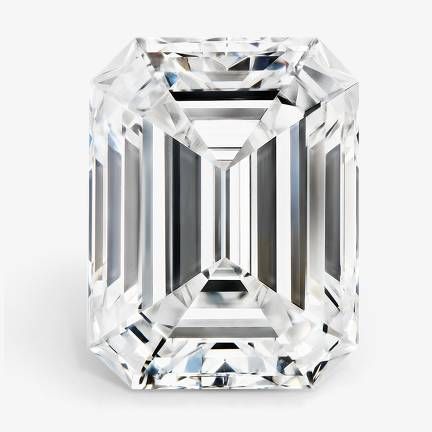
Another elongated shape, emerald cut diamonds are considered step-cut gems. Their facets are elongated, creating a different kind of sparkle that’s often referred to as a mirrored effect. Emerald diamonds have a large table, an elongated rectangular shape, long facets and beveled edges. These diamonds have a minimum of 49 facets.
The emerald diamond shape is a very old one, dating back to the 1500s. This diamond shape is named after emeralds, which were initially cut in this signature step-cut to reduce damage during the refinement process. The emerald shape saw immense popularity during the 1920s as it was emblematic of the Art Deco style. Though faceted differently, the emerald diamond shape is often considered a sibling of the baguette cut.
Pear Diamond History
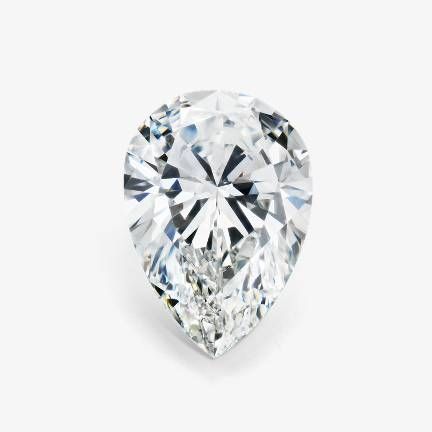
Pear shaped diamonds are a combination of round brilliant and marquise shaped cuts. Also known as teardrop diamonds, pear shaped diamonds have 58 facets. This diamond shape is identified by its namesake silhouette, with a curved head, rounded shoulders, straight wings and a pointed end. The table sits atop a brilliantly faceted pavilion, which tapers into a pointed culet.
The first pear shaped diamond was cut in 1475, with Lodewyk van Bercken credited as its inventor. Early pear shaped diamonds were not as brilliant as today’s versions, but they did solidify the staying power of this profile. The first versions of pear shaped diamonds were likely antique briolette-cuts.
Pear cut diamonds were mainly featured in vintage jewelry styles such as earrings or necklaces. Today, diamonds in pear shapes are often found in pear cut engagement rings.
Asscher Diamond History

Another Art Deco style, Asscher cut diamonds have a smaller profile than their elongated emerald counterparts. Asscher diamonds are squarer in shape, almost octagonal. They feature 58 facets and step-cut styling. Their girdle is their thickest point, tapering in a pyramidlike shape to a culet.
Created in 1902 by Joseph Asscher, this diamond cut was developed to retain more carat weight when cutting rough diamonds. The result is a diamond that brings step-cut style but stronger scintillation, bridging the gap between step-cuts and brilliant cuts.
This style saw popularity in the 1920s and it has a revival of demand today. To continue this diamond shape’s legacy, Joseph Asscher’s grandson Edward Asscher developed an updated version of his family’s namesake diamond. There is now an additional Asscher cut, called The Royal Asscher cut. This new Royal Asscher cut has 16 more facets than its predecessor.
Heart Diamond History

Nothing says “I love you” like heart shaped diamonds. These romantic gemstones are shaped for brilliance, fearing around 58 facets. Their heart shape is achieved with unique cutting of the crown, resulting in their romantic look.
Heart shaped diamonds are not a recent trend, they date back to the 1400s. Diamonds in heart shaped cuts were exchanged between royalty of many countries including a heart shaped diamond ring that was gifted to Queen Elizabeth I by Mary Queen of Scots. Cardinal de Richelieu, a French nobleman from the 1500s, also owned a famous heart shaped diamond that was 20 carats. This diamond shape was associated with friendship and love.
Today, the history of the heart diamond continues as it adorns many romantic pieces of jewelry. It is often used in engagement rings.
Radiant Diamond History
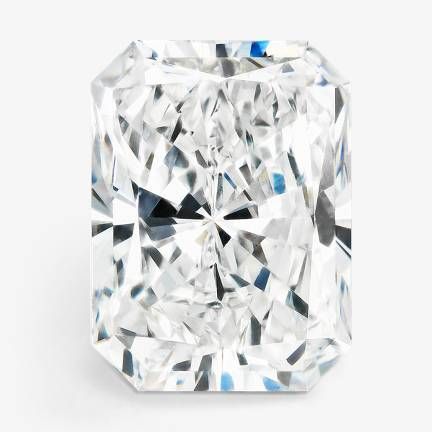
As one of the newest diamond shapes, radiant cut diamonds combine some of the best elements of step-cuts and brilliant-cuts. With 70 facets, the radiant cut diamond shape hides flaws well. It is a rectangular diamond shape with a large table beveled edges.
Radiant cut diamonds were introduced in 1977 by Henry Grossbard, an expert diamond cutter who aimed to create a new diamond cut that maximized brilliance and fire. While not the most popular of all the diamond shapes, radiant cuts do offer unique beauty that combines vintage-styling with modern brilliance.
Marquise Diamond History

Sometimes referred to as a football diamond, the marquise cut diamond looks like an oval cut with pointed ends. It has a rounded middle and two pointed tips on the top and the bottom, with an average of 58 facets and brilliant cutting. Due to its shallower depth, this diamond shape often looks larger for its carat weight than other cuts.
Though not a heart shape, the marquise diamond shape is still a very romantic one. The diamond gets its name from the 1700s when King Louis XV of France commissioned his jeweler to design a diamond that resembled the shape of his lover Marquise de Pompadour’s lips.
In more recent years, this diamond shape saw popularity in the 1970s and 90s. There is a resurgence in demand for this diamond shape, especially in East West ring settings.
More About Different Diamond Shapes
With new technologies for cutting and polishing diamonds, there are seemingly endless shapes to choose from. But there are key shapes that are the most popular and standard for highlighting the qualities of this gemstone. The most common diamond shapes are round, princess, cushion, oval, emerald, pear, Asscher, heart, radiant and marquise.
Diamond grading assesses a diamond’s 4Cs and additional elements of note with objective analysis. When comparing IGI vs GIA, diamonds with GIA gradings are considered the most reliably graded. We offer GIA reports for all of our loose diamonds, no matter the shape.
Polki diamonds are considered to be one of the oldest diamond shapes. These diamonds can be traced back to the initial diamond deposits discovered in India 2,500 years ago and they are popular to this day in Indian bridal jewelry. Polki diamonds are largely unprocessed, resulting in a rawer gemstone appearance.
Round brilliant diamonds are the most popular shape.
Choosing the Best Diamond Shape
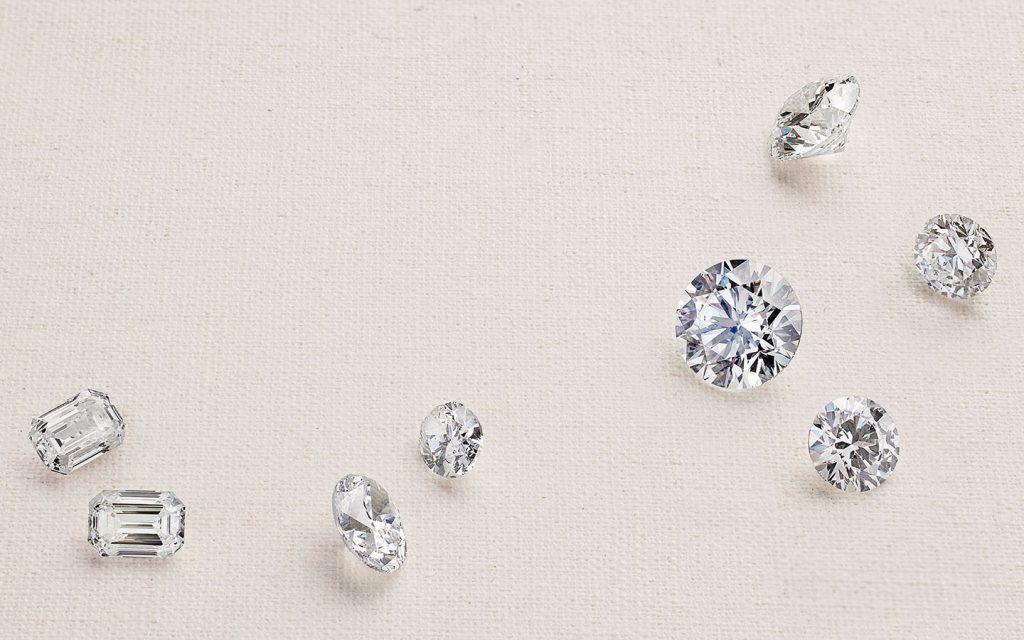
Each diamond shape offers its own benefits and considerations. When cut properly, any diamond shape can offer the unique beauty of this stunning gemstone. The best shape is the one that speaks to you.
Shape can influence the diamond price, with many fancy shapes bringing lower prices than the classic round brilliant shape. Different shapes can highlight positive qualities and mask less favorable features of a specific diamond, so that may also influence which shape you choose. Explore our wide selection of loose diamonds, diamond jewelry and lab grown diamond jewelry to find your fit.


